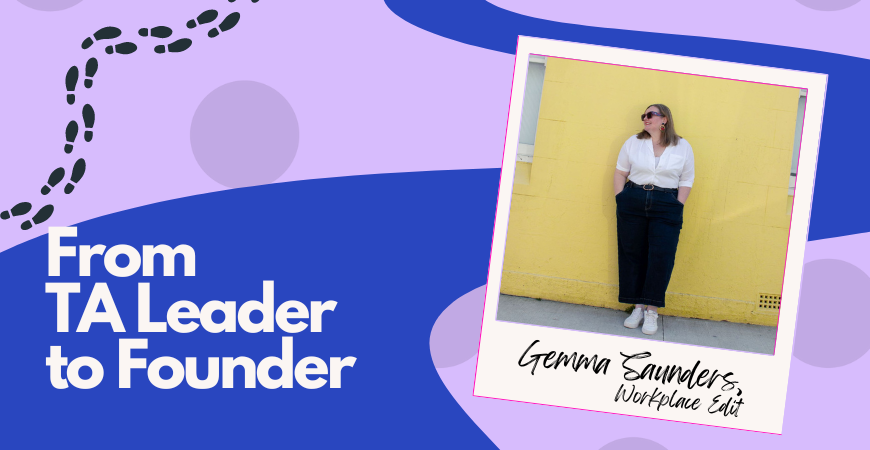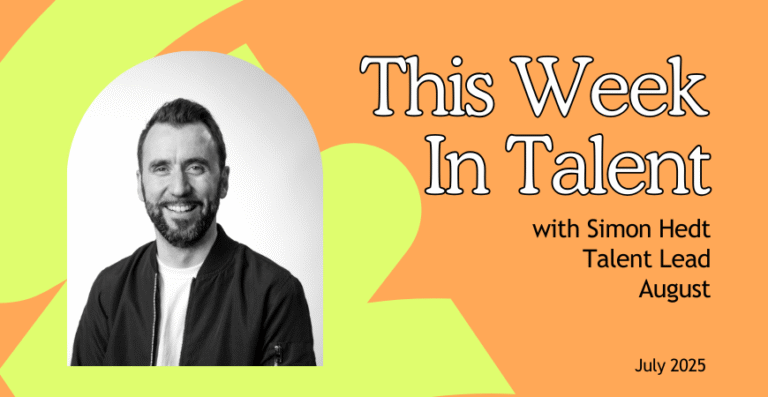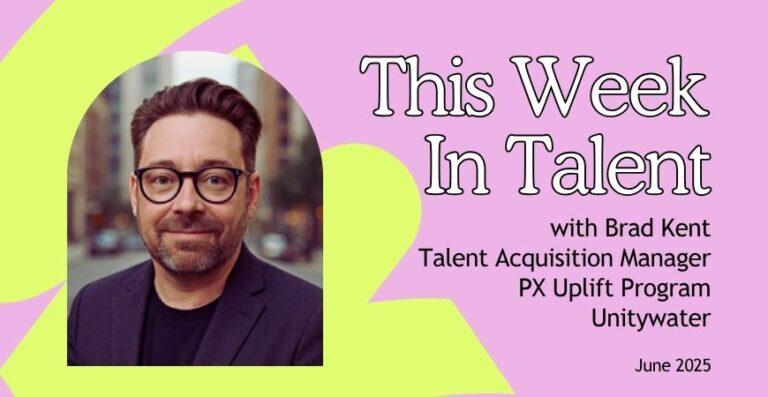Ever thought about jumping ship from the corporate structure and going out on your own? You’re not alone; it’s a common theme that keeps coming up in our many chats with the TA Community. People are sick of the Merry-Go-Round and being overworked. And of course there’s the ever-present threat of redundancy that seems to constantly loom overhead in many organisations.
So what does it actually look like to go out on your own? And how do you turn your Talent Passion Project Side-gig into your 9-5? In our From TA Leader to Founder we chat with ex-TA leaders about how and why they took the leap to go out on their own, and what it looks like to be an entrepreneur in the Talent world.
 Gemma Saunders worked at Medibank in a range of different Talent roles across Talent Acquisition, Organisational Development, DEI, and Employee Experience for almost 10 years before going out on her own with The Workplace Edit. We sat down with Gemma to talk to her about transitioning from life in Talent at a major corporate organisation to working for herself.
Gemma Saunders worked at Medibank in a range of different Talent roles across Talent Acquisition, Organisational Development, DEI, and Employee Experience for almost 10 years before going out on her own with The Workplace Edit. We sat down with Gemma to talk to her about transitioning from life in Talent at a major corporate organisation to working for herself.
What ignited your decision to move out of an Internal/Employee role and start your own business?
At the time, I had been in Talent, Capability, and Employee Experience roles at Medibank for nine years. I started to speak at events, attend roundtables and have coffees with other Talent & DEI leaders to share wins, challenges and insights. Through those conversations, I found so much joy, learning opportunities and the ability to have an impact beyond my organisation that it made sense to make the leap. I felt the urge to challenge myself and test my skills and style in new sectors and contexts outside of the one organisation.
Did you have varying ideas on what the business might be or did you know from the start?
I knew from the start that I wanted to focus on changing workplace environments rather than making people change or asking them to put themselves in a space that wasn’t designed for them. I also had an unfinished dream of being Editor-in-Chief at a swanky magazine so the concept of editing the workplace felt so right. And whilst Workplace Edit is not The Devil Wears Prada, there can be some pretty fun moments! I had used a lot of human centred design techniques and tools in my previous roles and I found there was a world at the intersection of experience design and diversity, equity and inclusion. That’s my happy place and where I find I offer a unique contribution as a small business and partner to organisations trying to create sustainable change.
What was the most surprising and challenging thing about going out on your own?
I was surprised at the community of other small business owners and freelancers who want to genuinely help. There’s a real element of relationship, reciprocity, and abundance mindset once you start shaking off fear and scarcity. If you are willing to ask for help, it is available to you. Big shout out to people like Jo Vo, Edan Haddock and others who lift others up. I like to play my part too so I am always happy for a call with anyone who is scoping out their corporate escape!
What have you found most rewarding or what has been your biggest achievement?
Honestly, it’s not an award or big client deal. I’ve had some fab clients and cool brands but it’s beyond that. I really think my biggest achievement is believing in myself and leaning into lots of new, challenging things and creating a business model that allows me to be a quirky, queer leader, parent, mentor and part of communities that are special.
I also look for small things like the ability to coach people to find and share their stories and build inclusive cultures and seeing them find healing and hope in their own stories and the ripple effect that has on others. The rewards are in the small edits, not the headlines!
How long did it take for you to find the right offer and rhythm?
I think the right offer and rhythm can be an ongoing question you need to tackle. I revisit that every 6 months by design and often I have to go to a calm, country town, bunker down with a big brunch, pens, paper and self-reflect and plan. I also engage business coaches when needed as this investment allows me to align to my purpose and values and establish a rhythm and systems that serve that bigger goal. I change, the world changes and we have to adapt. I have shifted to some signature edits and partnership models rather than operating on a daily rate basis. This works for me and the clients because there is a solid value exchange and we get to be really partners in the quest for inclusive workplaces and equitable outcomes.
Final Question – tell us what Workplace Edit does in two sentences.
Bold teams are curiously exploring the gap between their strategic goals, their workplace practices and the impact this has on people and performance. At Workplace Edit, we help edit their practices, systems and behaviours so that workers get the best from their workplaces and workplaces get the best from their workers. Find out more about us here.







